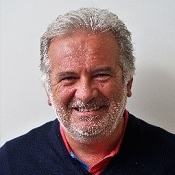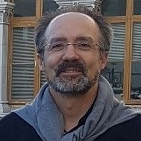Remote Sensing, Metric Survey and Spatial Information Technologies for Heritage Management
A special issue of Remote Sensing (ISSN 2072-4292). This special issue belongs to the section "Remote Sensing in Geology, Geomorphology and Hydrology".
Deadline for manuscript submissions: closed (10 August 2021) | Viewed by 21389
Special Issue Editors
Interests: digital photogrammetry; HBIM; GIS; digital humanities; CH documentation
Special Issues, Collections and Topics in MDPI journals
Special Issue Information
Dear Colleagues,
The technological development of Remote Sensing, Photogrammtery, and the disciplines that are today grouped under Geomatics (e.g., GIS, HBIM) offers, every year, new ideas and new products that can help with the documentation, intervention, monitoring, and day-by-day management of cultural heritage assets.
Cultural Heritage assets are today extremely in danger due to different natural and human factors (e.g., climate change, earthquakes, hydrogeological risks, wars, urban development). The experts involved in cultural heritage management (documentation, intervention, day-by-day management) are continuously looking for the best possible solutions to their needs, by considering both technical and economic aspects.
Mile-stone, in all the Geomatics disciplines, is the quality assessment of the provided data (both metric and semantic ones) which is the first information that the users of Geomatics data have to know to understand correct and affordable uses of those data.
The proposed Special Issue of Remote Sensing aims to explore the potentialities of the new primary data for metric and semantic description of cultural heritage assets (e.g., landscapes, urban centers, buildings, sculptures, paintings, books, underground and underwater resources) and the new tools to manage all those data in a coherent and effective way to describe their basic physical properties and to monitor their changes over the times.
Prof. Dr. Fulvio Rinaudo
Prof. Dr. José Luis Lerma
Guest Editors
Manuscript Submission Information
Manuscripts should be submitted online at www.mdpi.com by registering and logging in to this website. Once you are registered, click here to go to the submission form. Manuscripts can be submitted until the deadline. All submissions that pass pre-check are peer-reviewed. Accepted papers will be published continuously in the journal (as soon as accepted) and will be listed together on the special issue website. Research articles, review articles as well as short communications are invited. For planned papers, a title and short abstract (about 100 words) can be sent to the Editorial Office for announcement on this website.
Submitted manuscripts should not have been published previously, nor be under consideration for publication elsewhere (except conference proceedings papers). All manuscripts are thoroughly refereed through a single-blind peer-review process. A guide for authors and other relevant information for submission of manuscripts is available on the Instructions for Authors page. Remote Sensing is an international peer-reviewed open access semimonthly journal published by MDPI.
Please visit the Instructions for Authors page before submitting a manuscript. The Article Processing Charge (APC) for publication in this open access journal is 2700 CHF (Swiss Francs). Submitted papers should be well formatted and use good English. Authors may use MDPI's English editing service prior to publication or during author revisions.
Keywords
- Remote sensing
- Photogrammetry
- GIS and HBIM
- Quality assessment
- Satellite image processing
- Aerial image processing
- Terrestrial and underwater image processing
- CH documentation
- CH monitoring






